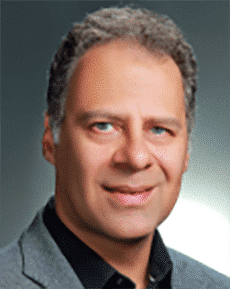Fundamentals of mm-Wave and Sub-Terahertz Frequency Generation, Synthesis, and Radiation for Multi-Antenna Array Transceivers Payam Heydari
Biography
Payam Heydari received his B.S. and M.S. degrees (Honors) in Electrical Engineering from Sharif University of Technology in 1992 and 1995, respectively. He received his Ph.D. degree from the University of Southern California in 2001. He is currently a Full Professor of Electrical Engineering at the University of California, Irvine.
His research covers the design of terahertz/millimeter-wave/RF and analog integrated circuits. He is the (co)-author of two books, one book chapter, and more than 140 journal and conference papers. He has given Keynote Speech to IEEE GlobalSIP 2013 Symposium on Millimeter Wave Imaging and Communications, served as Invited Distinguished Speaker to the 2014 IEEE Midwest Symp. on Circuits and Systems, and gave a Tutorial at the 2017 International Solid-State Circuits Conference (ISSCC). He has served as Distinguished Lecturer of both the IEEE Solid-State Circuits Society (SSCS) (2014-2016) and the IEEE Microwave Theory and Techniques Society (MTT-S) (2019-2022).
Dr. Heydari is the recipient of the 2016-2017 UCI School of Engineering Mid-Career Excellence in Research, the 2014 Distinguished Engineering Educator Award from Orange County Engineering Council, the 2009 Business Plan Competition First Place Prize Award and Best Concept Paper Award both from Paul Merage School of Business at UC-Irvine, the 2010 Faculty of the Year Award from UC-Irvine’s Engineering Student Council (ECS), the 2009 School of Engineering Fariborz Maseeh Best Faculty Research Award, the 2007 IEEE Circuits and Systems Society Guillemin-Cauer Award, the 2005 IEEE Circuits and Systems Society Darlington Award, the 2005 National Science Foundation (NSF) CAREER Award, the 2005 Henry Samueli School of Engineering Teaching Excellence Award, and the Best Paper Award at the 2000 IEEE Int’l Conference on Computer Design (ICCD). He was recognized as the 2004 Outstanding Faculty in the EECS Department of the University of California, Irvine. His research on novel low-power multi-purpose multi-antenna RF front-ends received the Low-Power Design Contest Award at the 2008 IEEE Int’l Symposium on Low-Power Electronics and Design (ISLPED). The Office of Technology Alliances at UCI has named Dr. Heydari one of 10 Outstanding Innovators at the university.
Dr. Heydari is currently a member of International Technical Program Committee of the International Solid-State Circuits Conference (ISSCC), an Associate Editor for the IEEE Solid-State Circuits Letters (SSC-L), and a member of AdCom for the IEEE Solid-State Circuits Society. He has served as the Guest Editor of IEEE Journal of Solid-State Circuits (JSSC), and Associate Editor of IEEE Trans. on Circuits and Systems – I. He is an IEEE Fellow for contributions to silicon-based millimeter-wave integrated circuits and systems.
Presentations
Fundamentals of mm-Wave and Sub-Terahertz Frequency Generation, Synthesis, and Radiation for Multi-Antenna Array Transceivers
Operation in the mm-wave and terahertz (THz) bands has gained great interest due to abundance of unutilized spectrum and resurgence of new applications in wireless/cellular communications, most notably 5G. If combined with spectrally efficient (de-)modulation techniques, mm-wave/THz wireless communication has the potential to achieve multi-gigabit-per-second wireless data-rate. In addition, the operation at higher frequency gives rise to smaller size passive components (most notably antennae), making it possible to design and implement massive phase-array or MIMO systems on a single die or single wafer. As the communication schemes including spectrally-efficient (de-)modulation and carrier aggregation techniques are making progress at RF frequencies, far more challenging requirements will be imposed on the oscillator and frequency synthesis design. Increasing the carrier frequency towards the mm-wave/terahertz regime only makes these requirements more stringent.
These seminar series cover two generic inter-related themes, namely (1) a comprehensive overview of mm-wave multi-antenna transceiver architectures which includes phased-array, MIMO, and beam-forming MIMO architectures; (2) a general, yet in depth, overview of frequency generation, synthesis, and high-efficiency radiation at mm-wave and sub-terahertz frequencies.
Topics to be covered in each seminar are selected from the following items: (1) Fundamentals of multi-antenna architectures enabling beam-forming, diversity, and spatial multiplexing. (2) Overview of front-end design for multi-antenna transceivers including RF phase-shifting, LO phase-shifting, and array coupled of oscillators. (3) The fundamentals of oscillator design at mm-wave/sub-terahertz frequencies. (4) Overview of several oscillator topologies (which are amenable to high frequencies) including modified Clapp, double-stacked cross-coupled pair, inductive tuning, and varactor tuning with loss compensation. (5) A new perspective and design philosophy of mm-wave/THz frequency synthesizer design for the purpose of maximizing output power and frequency tuning and minimizing phase-noise. (6) An in-depth overview of techniques and architectures facilitating very high efficiency, high power and low noise radiation using novel on-chip multi-port oscillators incorporating new on-chip high-Q passive structures.
